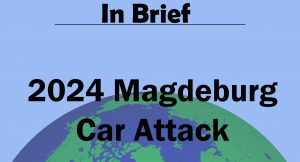This post was originally published on Astrology News Service

Alex Miller
It’s that time of year again; the holidays are upon us, and amidst the lights and tinsel, trees and presents, one enduring emblem of the season remains almost inescapable. It’s well-nigh impossible to make it through December without at least a glimpse of “A Christmas Carol,” Charles Dickens’ classic 1843 novella that introduced the world to Ebeneezer Scrooge and Tiny Tim, and almost single-handedly created the modern concept of Christmas. Filmed over 100 times, and adapted into endless variations on TV, radio, the stage, animation, even a ballet, “A Christmas Carol” is surely one of the pillars that upholds yuletide.
As Charles Dickens’ best-remembered work, you might expect there to be hints of it in the nineteenth century author’s birth chart, and you’d be right! There’s no “Christmas” asteroid, but there’s an asteroid Yule, an alternate name for the holiday, as well as an asteroid Carol, and that’s good enough to be getting on with!
Born 7 February 1812, Charles Dickens is one of those human worthies immortalized by celestial nomination, with his own eponymous asteroid Dickens. No surprise, this point appears at 17 Scorpio, in a precise ninety-degree square to his 17 Aquarius Sun, symbolizing his lifeforce and core identity (albeit the actual asteroid wasn’t discovered and named until 1982, 170 years after his birth!). This Sun/Dickens square is something we’ll encounter again in our saga, but for now let’s take a look at the natal placements for Yule and Carol.
Both contribute to “A Christmas Carol” becoming a self-defining masterwork by Dickens, with asteroid Yule at 28 Aquarius, just at the periphery of conjunction with the Sun, but closely opposed (180 degrees) asteroid Charlene at 27 Leo (one of two asteroid variations of Charles, for which there is no exact match), making for a highly personal connection. Charlene and Yule have a very symbiotic relation with this polarity – one reflects the other (in the way a Full Moon reflects the Sun at their opposition in the sky), and they become inextricable in the popular mindset.
As well, asteroid Carol at 24 Virgo aligns with the 18 Virgo Ascendant, the point which governs how others see us, an identifier that defines our public image. “A Christmas Carol” created an instant sensation, with its first edition, published on 19 December 1943, selling out by Christmas Eve; by the end of the following year thirteen editions had been released. Dickens became immediately identified with the work, on an international scale, and readings from it dominated his lecture circuit, whatever time of year, for the rest of his life.
Let’s talk a bit about Uranus here, too; Uranus governs the new and innovative – in fact, invention itself. It’s also associated with social progressivism, and a major theme of Dickens’ work was the plight of the poor in Victorian England, and the insensibility of the upper classes to their misery. It’s no surprise, then, to find Uranus in this mix as well. From 23 Scorpio, Uranus conjoins Dickens and squares both the Sun and Yule, highlighting Charles Dickens’ liberal bent but also appropriate for the individual who, in the title of a 2017 Dickens biopic, was “The Man Who Invented Christmas.” Dickens’ impact on how we view Christmas was, indeed, revolutionary (another Uranian keyword), enshrining mid-Victorian yuletide customs for future generations to emulate.
We’ve already noted that the novella’s initial publication was 19 December 1843; that date shows the Sun and asteroid Dickens again in a square relationship, with the Sun at 27 Sagittarius squared Dickens at 25 Virgo. The solar contact highlights Charles Dickens, spotlighting his creative output. Uranus is involved again as well, appearing at 28 Pisces to form a T-Square, a pattern with two points in opposition and a third on their midpoint, roughly square to each. But the kicker here is Dickens’ birth Jupiter, the planet governing fame and celebrity (as well as publication), which at 26 Gemini transforms this pattern into a full-fledged Grand Cross, a dynamic linkage that brings energy and commands attention. Surely Dickens’ celebrity underwent a dramatic boost in the wake of the novella’s popular reception, and it remains the work with which he is most identified.
Asteroid Yule is now at 29 Scorpio, closely squaring its birth degree, as well as the publication’s profile-boosting Jupiter at 24 Aquarius. Asteroid Carol at 12 Cancer opposes Venus at 16 Capricorn, another indicator of popular success (and one which has the potential to become much-beloved), and is sesquiquadrate (135 degrees) publisher Jupiter, with Venus further known as “the Lesser Benefic” and Jupiter as “the Greater Benefic,” both planets that bring positive outcomes and, often, pecuniary advantage (with Venus and Jupiter also ruling, respectively, lesser and greater amounts of largesse).
When Charles Dickens passed away on 9 June 1870, his literary legacy was assured, in large part as the writer of “A Christmas Carol.” Once again we see the Sun in square to Dickens, from 18 Gemini and 13 Virgo respectively, denoting another important moment in Dickens’ bio. A T-Square is formed with a death indicator named asteroid Rip (“RIP”) at 18 Pisces, indicating the nature of this particular milestone, the doffing of his mortal coil (if I may borrow from another esteemed English author). There are two additional indicators of the death of a writer, which is a profession ruled by Mercury. The first is a conjunction of Mercury at 11 Gemini with asteroid Lachesis at 10 Gemini, named for the mythic Greek Fate who determines the span of life, linking literature and mortality. Their simultaneous conjunction with the Sun pulls focus for this theme generally, with all authors potentially susceptible to the effects. The second involves a connection from the sky that day to Dicken’s birth chart, with asteroid Osiris, named for the Egyptian god of the dead, exactly conjoined his natal Mercury at 4 Capricorn, specifying the passing of Dickens the author.
As well, asteroids Yule and Requiem (named for the funeral mass for the dead) are exactly conjunct at 19 Taurus, joined by Pluto (modern lord of death) at 18 Taurus, and opposing asteroid Charlotte (the second Charles referent) at 13 Scorpio, conjoined by asteroid Atropos at 21 Scorpio (named for the Fate who severs the thread of life at death; Atropos, incidentally, is exactly conjunct Dickens’ birth asteroid Lachesis). Note how this polarity aligns with natal asteroid Dickens at 17 Scorpio, forming a T-Square with his 17 Aquarius Sun, bringing us full circle for the man who invented Christmas.
Birth data for Charles Dickens from Astro Data Bank: 7 February 1812, 7:50 PM LMT, in Portsmouth, England (Rodden Rating A)
Alex Miller
Alex Miller is a professional writer and astrologer, author of The Black Hole Book, detailing deep space points in astrological interpretation, and the forthcoming Heaven on Earth, a comprehensive study of asteroids, both mythic and personal. Alex is a frequent contributor to “The Mountain Astrologer”, “Daykeeper Journal”, and NCGR’s Journals and “Enews Commentary”; his work has also appeared in “Aspects” magazine, “Dell Horoscope”, “Planetwaves”, “Neptune Café” and “Sasstrology.” He is a past president of Philadelphia Astrological Society, and former board member for the Philadelphia Chapter of NCGR. His two decades of chronicling asteroid effects in human affairs can be found at his website, www.alexasteroidastrology.com.
Share Our Story





